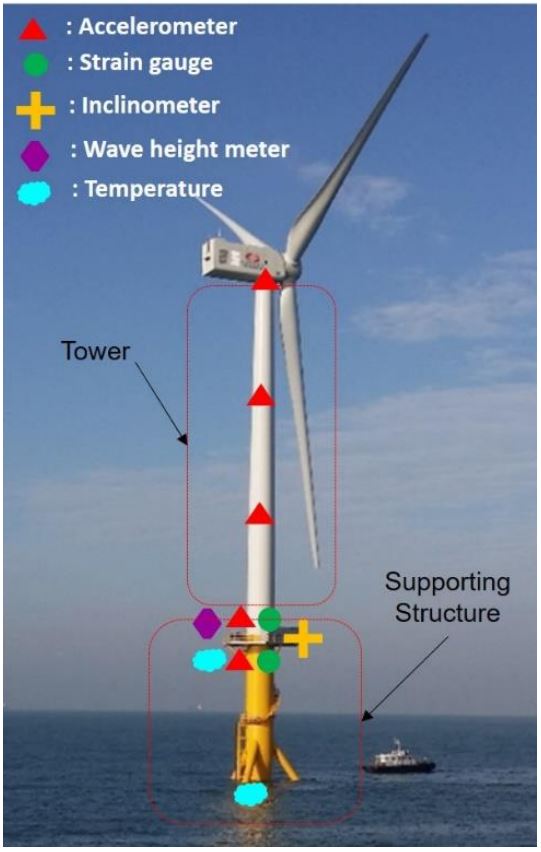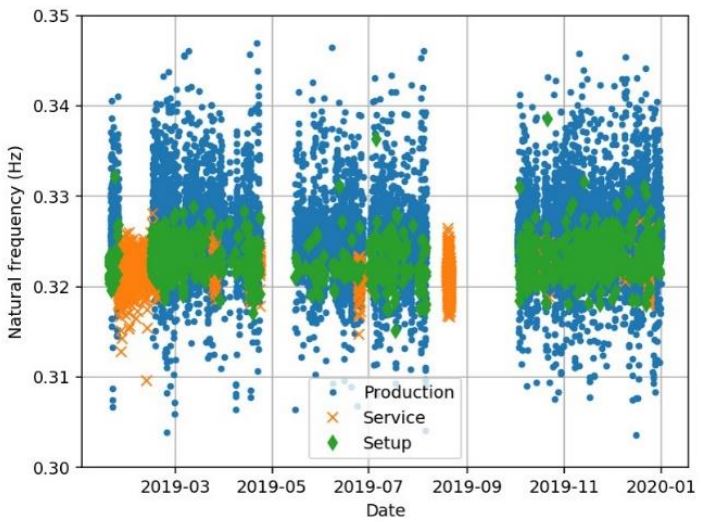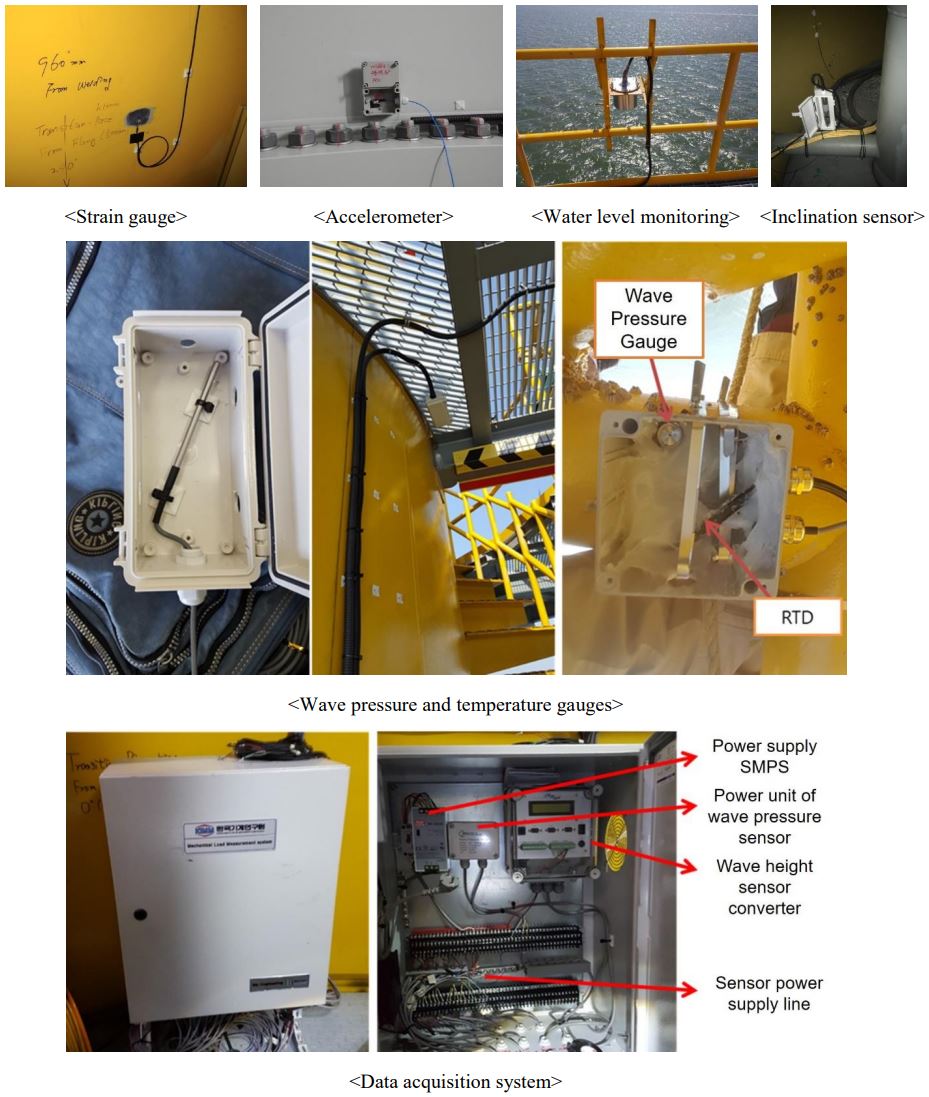
- Created2021.04.21
SHM system developed for Korea’s offshore wind turbines
-KIMM develops SHM system based on natural frequency of offshore wind turbines-
A structural health monitoring (SHM) system has been developed to effectively assess the health of Korea’s offshore wind turbines. Given the growing interest in renewable energy under the goal of achieving carbon neutrality, the proposed system is expected to contribute to safer operation of offshore wind turbines with suction buckets, and ultimately strengthen the competitiveness of wind energy production.
Dr. Yun-ho Seo, principal researcher of the Department of System Dynamics of the Korea Institute of Machinery & Materials (President Sang Jin Park; hereinafter KIMM) under the Ministry of Science & ICT, developed an SHM system for precise monitoring of structural health based on the natural frequency of offshore wind turbines.
The SHM system takes various measurements and monitors system health to prevent accidents involving large-scale structures such as buildings and bridges. The techniques utilized by the system include real-time vibration and strain measurement, visual inspection, non-destructive tests, and other diagnostic assessments performed offline on a regular basis.
The structural stability of offshore wind turbines is significantly influenced by load resulting from blade rotation. Structural health is of greater importance for offshore structures, which are influenced not only by tidal currents, but also corrosion and erosion due to salinity and ocean conditions.
The team developed a technique for real-time monitoring of natural frequency to effectively assess the stability of wind turbine supporting structures. Natural frequency is the frequency at which a structure oscillates when subject to an external force. Musical instruments such as the piano, xylophone, and pyeongyeong produce sounds at their natural frequencies.
The team succeeded in predicting natural frequency with measurements of power and rotational speed obtained from sensors attached to an offshore wind turbine. Previously, information obtained from various sensors had to be individually analyzed to assess structural health, but the proposed system enables health monitoring based on natural frequency prediction alone.
Human resources and operational expenses can be saved by applying the system to wind turbines with suction buckets, which are common in offshore wind power complexes off the coast of Korea.
Principal researcher Yun-ho Seo said, “The system will significantly enhance the operational stability of offshore wind turbines, and expand the utilization of eco-friendly, cost-competitive wind energy. The optimized monitoring of Korea’s topography using domestic technology ensures greater efficiency and safety.”
[List of Attachments] - Attachment 1: SHM system based on natural frequency of offshore wind turbine (photos)
- Attachment 2: Sensor for structural health monitoring of offshore wind turbine (photos)
The Korea Institute of Machinery and Materials (KIMM) is a non-profit governmentfunded research institute under the Ministry of Science and ICT. Since its foundation in 1976, KIMM is contributing to economic growth of the nation by performing R&D on key technologies in machinery and materials, conducting reliability test evaluation, and commercializing the developed products and technologies.
The research was conducted by the Korea Institute of Machinery and Materials (KIMM), and was supported as part of “AI-based Mechanical System Prediction Diagnosis and Accident Response Technology Development” by the Ministry of Science and ICT and “Empirical Study on Life-sized Offshore Wind Turbines with Suction Buckets as Supporting Structures” by the Ministry of Trade, Industry and Energy.
Credit : The Korea Institute of Machinery and Materials (KIMM)
Usage Restrictions of Multimedia (Attachment File) : The sources of photos and research results from KIMM must be specified.
-Attachment 1: SHM system based on natural frequency of offshore wind turbine(photos)

Photo description: The SHM system developed for offshore wind turbines by KIMM. Accelerometers, strain gauges, inclination sensors, wave pressure gauges, and temperature gauges are attached to the offshore wind turbine.

Photo description: The graph enables intuitive, efficient assessment of structural health using the natural frequency of an offshore wind turbine. The results were obtained from one year of monitoring. The blue portion represents the natural frequency during operation of the wind turbine, while orange and green represent natural frequencies when the wind turbine is not in operation.
-Attachment 2: Sensor for structural health monitoring of offshore wind turbine(photos)

Photo description: The structural health monitoring sensor developed for offshore wind turbines by KIMM. Natural frequency is predicted based on values measured individually by the sensor, and can be utilized for efficient structural health monitoring.



